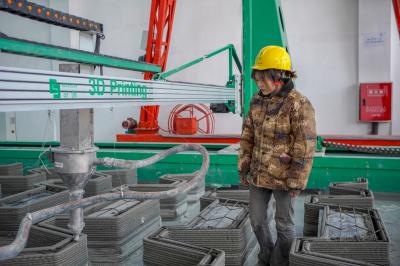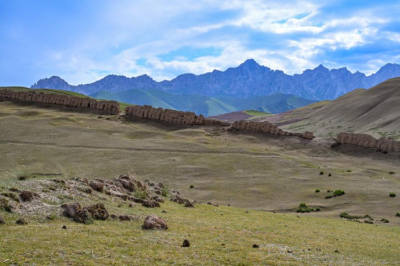Assistance from other provinces, autonomous regions, municipalities directly under the central government, and large and medium-sized enterprises began in the 1960s. Since the start of reform and opening up in 1978, assistance from developed provinces and cities has increased. In 1994, the Third National Symposium on Work in Tibet set down the principle of rallying national support for Tibet and specified the assistance pattern of allocating responsibilities to certain provinces and rotating them on regular intervals, giving more impetus to Tibet’s development. To date, a total of 18,000 officials and professionals from supporting provinces have been involved in the assistance campaign. Since 2015, assistance by educational and medical personnel from across the country has contributed tremendously to social development in Tibet. More than 10,000 projects are receiving support, representing a total investment of over 40 billion yuan. With deeper reform and opening up, the economic and cultural ties between people in Tibet and those in the rest of China have become closer, with an increasing number of mixed communities and a closer emotional bond. More high-caliber people from across the country are coming to Tibet with advanced concepts and technologies, and their contribution is warmly welcomed and appreciated by local people. More Tibetans are also opening businesses in Sichuan, Qinghai, Gausu, Beijing, Guangzhou and Shanghai. There is easy mobility among ethnic groups and intermarriages have become a common sight. In Tibet today, families consisting members with different ethnic background are to be seen everywhere. There is a courtyard near Barkhor Street in Lhasa which is home to more than 20 households composed of Han, Tibetan and Hui people who live harmoniously like one big family. X. Development of Tibet in the New Era
Since the 18th CPC National Congress was held in 2012, the CPC Central Committee with Xi Jinping as the core has attached great importance to Tibet and its ethnic groups. The CPC Central Committee has formulated major policies for development and stability in Tibet to meet the requirements for building a moderately prosperous society in all respects, achieving the Two Centenary Goals, and realizing the Chinese Dream of national rejuvenation. Xi, general secretary of the CPC Central Committee, put forward an important strategic idea: “To govern the country well we must first govern the frontiers well, and to govern the frontiers well we must first ensure stability in Tibet.” He issued instructions to “strengthen ethnic unity and build a beautiful Tibet.” He presided over the Sixth National Symposium on Work in Tibet in August 2015, defining guiding principles, objectives, and tasks in Tibet in the new era. It was decided at the symposium that the central government would support a large number of key construction projects that were to be included in the 12th and 13th Five-year plans (covering ten years from 2011 to 2020), and a series of special preferential policies benefiting all ethnic groups in Tibet were enacted. General Secretary Xi wrote a series of letters to celebrate the launch of the second comprehensive scientific investigation and research of the Qinghai-Tibet Plateau and the 60th anniversary of Xizang Minzu University, and to reply to a letter from the people of Yumai Township in Lhunze County. He wrote instructions for tree planting in Nagqu, and directed research into the Sichuan-Tibet Railway construction plan. He issued many important instructions on the development and stability of Tibet. The general plan for governing Tibet in the new era defined by the CPC Central Committee with Xi Jinping as the core is consistent with the principles and policies applied to Tibet since the beginning of democratic reform, while responding to Tibet’s development needs in the new era. It thus promotes the development and long-term stability of Tibet. To develop Tibet in a new era, the Central Authority is committed to the philosophy of people-centered development and the concept of innovative, coordinated, green, open, and inclusive development. It strives to promote economic and social development, safeguard and improve people’s wellbeing, promote exchanges and integration among ethnic groups, and strengthen environmental protection. These efforts will give vitality and vigor to Tibet. – Committed to innovative development and greater economic vitality Considering innovation as the primary driving force, the government of Tibet has worked hard to implement the strategy of innovation-driven development. It strives to promote institutional innovation. Driving development with supply-side structural reform, it is advancing reforms in key areas such as state-owned enterprises, the non-public economy, the factor market, the fiscal and taxation system, financial system, old-age insurance system, and medical and health system to tap the potential for development. It drives development with scientific and technological innovation, while enhancing government guidance. To achieve this, it is working to establish a market-oriented scientific and technological innovation system with enterprises as the mainstay and collaboration between government, enterprises, universities, and research institutes; and building platforms for scientific and technological innovation. It is also working hard to enhance commercialization of scientific and technological advances, and improve contribution of science and technology to economic development. |
- Home
- News |Tibet |Exclusive |China |World |Related News |Latest
- Documents |White Papers |Others
- Photo |Politics |Economy & Society |Culture & Religion |Human & Nature |Beautiful Tibet |Other Tibetan-Inhabited Area |Exchanges |Related
- Video |News |Documentary |Micro-Video |Entertainment
- Art
- Tourism
- In Focus
- About Tibet






